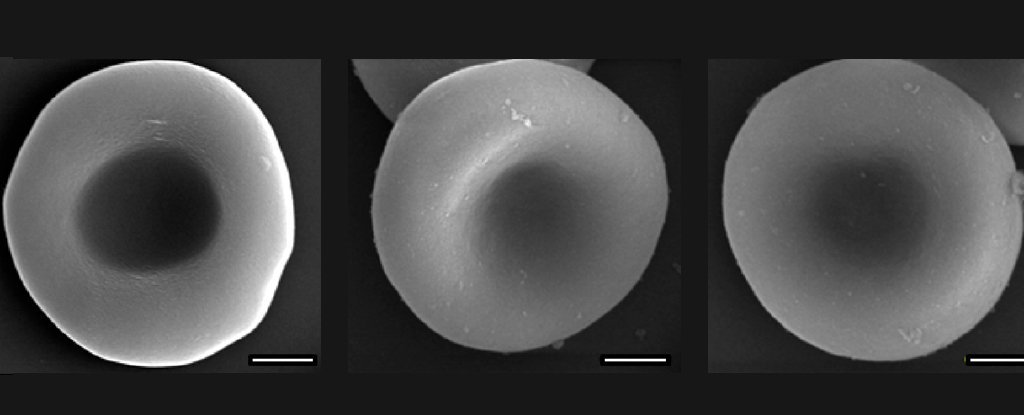News
Scientists Create Artificial Red Blood Cells That May Even Be Better Than The Real Thing
It can be modified to deliver tumor-killing medications, carry biosensors, and more.

(TMU) – Scientists have created artificial blood cells and found a new way to mimic the tissue that carries oxygen. Beyond that, the new artificial blood cells can allow for dispersing medicine into the body, sensing toxins, and other tasks.
An international team of bioengineers developed the historic blood cells from the University of New Mexico, Sandia National Laboratories, and the South China University of Technology. The study, published in the ‘American Chemical Society’s’ journal ‘Nano’, said they found these unique ‘cells’ retained the biconcave shape of the biological version.
“Inspired by the above pioneering studies wherein synthetic constructs were created that achieved one or several key features of native RBCs, we endeavored to create a modular rebuilt RBC (RRBC) mimic that possessed the complete combined features of native RBCs,” the researchers wrote in their paper published in the journal ACS Nano
In tests in mice, the cells circulated for over 48 hours, and its worth mentioning the team detected no toxic side effects as a result of injecting the artificial blood.

From RBC (left), to silica shell (middle), to polymer coat (right)(Guo et al., ACS Nano, 2020)
In other tests, the team showed off various other abilities that these synthetic RBCs could perform.
Red blood cells perform a vital function in our body – they carry oxygen from the lungs to all tissues. They do this through molecules called hemoglobin, which uses proteins containing iron that bind to oxygen. It was once thought that artificial blood was one of sciences’ holy grails due to decades of failure in the field.
Currently, there are already several synthetic RBCs already in development. Many rely on scavenging key materials such as hemoglobin from human or animal donors and repackaging them into benign particles that are unlikely to trigger an immune response, Science Alert reported.
In the past, when trying to create synthetic versions of red blood cells, scientists have had some trouble mimicking all of the properties. For example, Scientists in Japan previously developed “artificial blood” that could, in theory, be transfused into patients regardless of their blood type. However, their results tested in rabbits were mixed, IFL Science reported.
Scientists created artificial blood cells by combining biological material with lab-grown negative and positive charged polymers after they took donated human RBCs then covered them in a thin layer of silica. The researchers then carved away the silica – and finally, the surface was coated in natural RBC membranes.
Not only can the artificial blood cells squeeze through the tightness of your vascular system with its usual hemoglobin, but it can also be modified to deliver tumor-killing medications, carry biosensors, and more.
This is a huge discovery for science as the dependence on huge amounts of clean, freshly donated products to replace blood loss through trauma puts a high demand on finding a suitable substitute.
Typos, corrections and/or news tips? Email us at Contact@TheMindUnleashed.com
